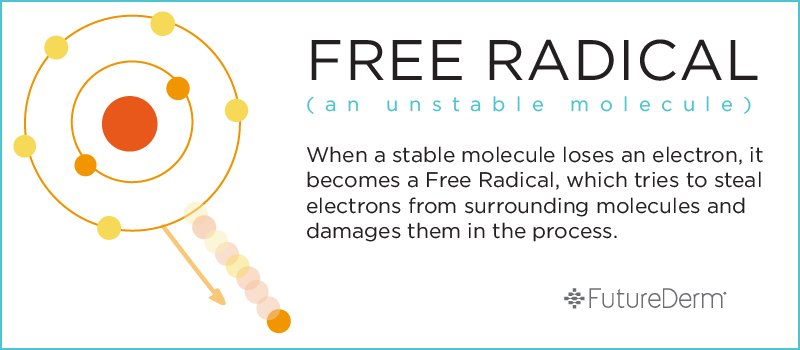Fulvic acid. You say the words in the U.S. and Canada, and people just kind-of stare at you blankly.
But in China, saying “fulvic acid” (as its Chinese equivalent) will grant you some respectful nods. For centuries, fulvic acid has been used in China for the treatment of diseases related to immune suppression. The medically-documented diseases treated with fulvic acid include bronchial asthma, rheumatoid arthritis and some forms of cancer.
Fulvic acid is also anti-microbial and anti-inflammatory (Drug Development Research, 2001; Journal of Antimicrobial Chemotherapy, 2000). This may explain why fulvic acid plays a role in mediating symptoms of contact dermatitis (Journal of Antimicrobial Chemotherapy, 2000), psoriasis (Karr), and eczema (Clinical, Cosmetic, and Investigative Dermatology, 2011).
But fulvic acid is more than just a treatment for irritated skin conditions. Rather, fulvic acid is a very potent free-radical scavenger, so much that many scientists and I suspect that it may have significant anti-aging effects against fine lines, wrinkles, skin sagging, and their prevention. However, we are still on the cusp of validating these assumptions.
Where is Fulvic Acid Found?
Plants’ numerous biochemical substances (e.g. carbohydrates, lipids, proteins & lignin) were transformed into Humic substances. Fulvic acid is found in varying levels in Humic substances and cannot be artificially synthesized at this time.
How Fulvic Acid Works
The primary activity of fulvic acid is the reduction of free radical reactions that damage body tissues (ie. from infection or uncontrolled release of free radicals in the body by malignant tissues – cancer).
Antioxidants lower free radical damage to the body. Fulvic acid’s unique capacity for penetration of the skin allows absorption, reducing free radicals within the skin and body.
What Does Fulvic Acid Do For the Skin?
Fulvic Acid is a natural biological compound derived from plants that existed at the time of dinosaurs. Large quantities of ancient vegetation underwent a transformation process at that time. Microbial decomposition was followed by compression over time, turning into mineral like deposits called Humic substances.
A similar process occurred for coal and diamonds.
It has been shown in peer-reviewed studies to be effective against treating dry skin and eczema (Clinical, Cosmetic, and Investigative Dermatology, 2011).
Fulvic acid is an active free radical scavenger that binds harmful free radical existing in skin and associative tissues.
As our skin ages, it dramatically changes in structure and chemistry. A newborn has acidic skin (low pH), and as we mature past 40 years the pH of our skin changes, becoming alkaline. Adults who have spent a lot of time in outdoor activities have exposed their skin to the sun’s harmful ultraviolet irradiation, resulting in premature aged or damaged skin.
Skin as a living tissue is a reflection of our physiological maturation process. The primary physiologic influence on skin maturity is reduced blood circulation which results in: lower oxygen and nutrients delivery to skin cells, slowing rate of skin cell replacement and, consequently, thinner skin.
The dermis is the deepest skin layer where synthesis of elastin and collagen protein occurs. These tissue proteins are responsible for the elasticity and strength of the skin. Low blood circulation suppresses protein synthesis, slows the turnover rate of skin cells and increases the breakdown rate of the skin. The evidence of this is that facial expression lines deepen and skin begins to sag.
Skin cells migrate their way to the surface over time. The slower cellular turnover rate results in a longer time period for cells reach the surface. Surface skin cells accumulate becoming dull, devitalized and dead. This results in a rough skin texture.
The skin’s natural oil barrier blocks air pollutants, chemicals, microbial pathogens, and other contaminates from penetrating the skin as well as maintains skin hydration. Slowing the turnover rate of skin cells lowers oil synthesis and levels of skin cell hydration.
What are the Best Products with Fulvic Acid?
Fulvic acid is the main ingredient in the Fulom Skin Care line ($22-31, Fulomskin.com). This very reasonably-priced line contains the highest concentrations of fulvic acid I have seen in a skin care line, and delivers near-instant relief for dry or eczematous skin.
One of my favorite products in the line is the Fulom Hydrating Lotion ($30.75, Fulomskin.com)
Bottom Line
Fulvic acid is huge in Asia, but it hasn’t caught wind yet in the western Hemisphere. And that’s a shame, because fulvic acid has proven efficacy for everything from eczema to psoriasis to mild to moderate cases of acne. At the same time, fulvic acid also has tremendous potential as an anti-aging agent due to its astonishing antioxidant activity in preliminary studies.
If you’ve tried everything for your eczema, psoriasis, rosacea, or dry/irritated skin and nothing has worked, or if you’re just looking for a way to boost your anti-aging regimen, try the Fulom Skin Care line. These products are state-of-the-art, with high concentrations of fulvic acid, and are value-priced so you can slather them on multiple times per day! I truly think these are cutting-edge and fulvic acid could be the next new ingredient for dry, irritated skin.







